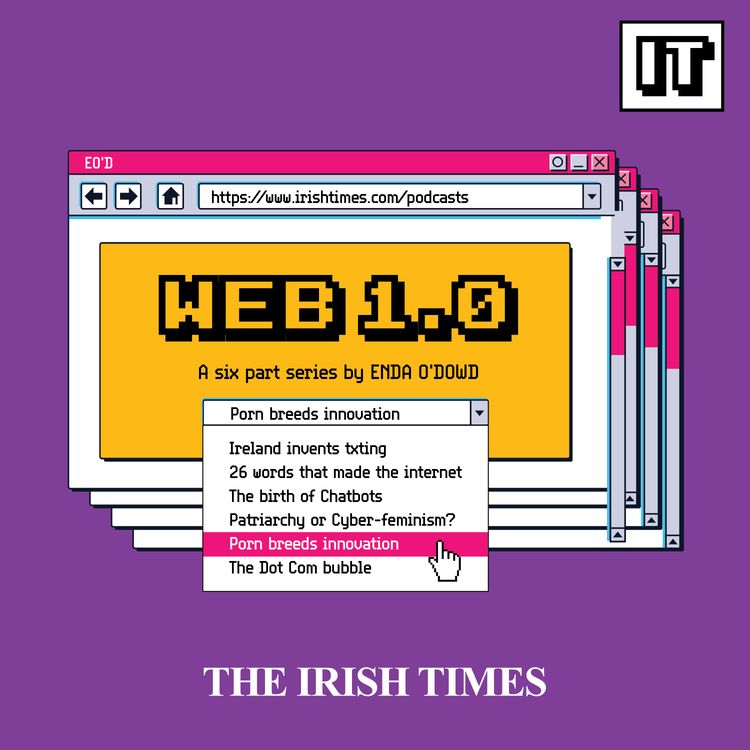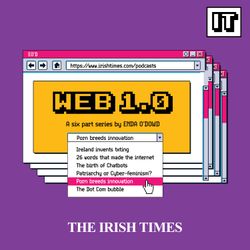Share

Web 1.0
Porn’s sticky fingers are all over the modern internet
A lot of credit is given to pornography for driving technological change. In reality it’s often an urban myth.
When rival video formats VHS vs Betamax fought a battle for supremacy, pornographers actually hedged their bets and invested in both. VHS’s eventual dominance was as due as much to their sales team as the adult entertainment business.
But online, there were some significant developments. The most important law relating to the internet, Section 230, was created due to an argument around pornography.
And in this episode Lee Noga tells us how pornography also led to familiar features like banner ads, double opt-in messages and webpage analytics. It turns out porn’s sticky fingers are all over modern UX.
We also hear from Gary Kremen, who is often credited with inventing online dating. Kremen was also involved in a convoluted court case over a $65million domain name.
Why is the internet the way it is? In Web 1.0, a six-part podcast series, Irish Times videographer Enda O’Dowd explores the arguments and innovations that were happening back when the web was new, and how they reverberate in today’s messy and chaotic online world.
More episodes
View all episodes

The end of the information superhighway?
33:38|Editing itself is a series of putting a structure, a controlled narrative, onto life - which is itself uncontrollable. In the book “The Uncontrollability of the World” author Harmut Rosa writes about how, in life today, there can be “no space in public and political discourse for the idea — the reality — of uncontrollability in social life.”Today the internet imbues us with an expectation we can control all aspects of our lives. We have apps to monitor our sleep, steps, heart rate and productivity. We have notifications for our cloud based to-do lists and endless reminders of meetings and anniversaries. If anything, ever, is forgotten, we can be called, emailed and pinged. On social media I scroll past photographs of a constructed expectation of an event, babies are smiling and the sun is always setting. Nothing can fall out of control. This episode looks at three individuals' stories from when the dot-com bubble burst and how they all fell out of control due to the market. Eugenie Diserio looked to the celestial bodies and founded Astronet, a pioneering astrology start-up, but the stars didn’t align and the business crashed due to the whims of media conglomerates.Jan Wellman built Riot Entertainment and he rode the dot-com boom, but the crash would take his business down just before it was about to take off. And Martha Lane Fox survived the dot-com crash - but chaos still managed to intervene.
Hot or Not versus Cyberfeminism
31:32|Web 1.0 is a new six part series from The Irish Times that looks at the origins of the modern internet. We talk to everyone from coders to astrologers and pornographers to hear the stories of people who were there and designed the methods of communications that we all use today.This episode looks at how, for a period of time, the new online world posed a real challenge to the patriarchy. And how some of the people who helped support the patriarchy did so unwittingly. The episode also explores how those early battles fed into the development of the online world we are familiar with today. Recent research from the University of Chicago titled When Product Markets Become Collective Traps: The Case of Social Media” found that “64% of active TikTok users and 48% of active Instagram users experience negative welfare from the products’ existence. Clearly, users are spending time on apps that are not giving them a positive return. The study showed that students would be willing to switch their social media off, for a fee of €59 - but that fee would drop if their friends had to switch theirs off, too. In other words, their experience of social media was often negative - but would be even more negative if they were deprived of the use social media and their friends weren’t. This is what they call the “social media trap”, where the only thing worse than being on social media is being excluded from it. It’s particularly acute among younger women on social media. According to Instagram’s own research, one in four teenage girls in the UK say the app makes them feel worse about themselves. This episode looks looks at how we ended up with systems that are so corrosive to our mental health.This podcast was made by Enda O’Dowd with help from John Casey and Declan Conlon. Artwork by Paul Scott. Music by Kirk Osamayo and Sergey Cheremisinov
How Irish companies brought us texting and took us online
32:13|This is the story of how Barry Flanaghan brought the internet into Irish homes. Though it’s an Irish story, there are variations of it in countries across the world.In France there was the Minitel, which was the world's most successful online service prior to the World Wide Web.It was launched in 1982 by Gerard Thery, a telecoms engineer. Minitels were boxy computers where one could look up phone numbers, buy concert tickets, check cinema listings and do online banking.They were also free. France Telecom issued them to every house in a bid to cut the cost of printing phone books.In the US Jan Brandt spearheaded direct marketing for America Online and was given free rein of AOL’s marketing strategy. Her plan was to get AOL CD’s into the hands of as many Americans as possible and thus get those people onto the World Wide Web. This meant producing a lot of CDs - AOL says that for several weeks in 1998 they used the world's entire CD production capacity.It was hugely successful: at one point they were logging a new customer every six seconds. Brandt helped increase their number of subscribers from 200,000 to more than 22 million, bringing many Americans online for the first time.And Barry Flanaghan was doing similar in Ireland. He set up Ireland’s first internet services provider and didn’t just sell the internet to Ireland but the concept of what the internet could be.Also in this podcast: Joe Cunningham is another Irish communications pioneer who overcame setbacks to play a pivotal role in the establishment of texting as a powerful new medium.This podcast was made by Enda O’Dowd with help from John Casey and Declan Conlon.Artwork by Paul Scott.Music by Kirk Osamayo and Sergey Cheremisinov.
Four court cases and a magazine cover story
31:50|Why is the internet the way it is? In Web 1.0, a new six-part podcast series, Irish Times videographer Enda O’Dowd explores the arguments and innovations that were happening back when the web was new, and how they reverberate in today’s messy and chaotic online world. This is the story of how 26 words in Section 230, a clause within a US law originally designed to clean up the internet, helped to shape the modern online world - and how a series of anonymous posters brought it all about.
Does AI have nightmares of endless September?
32:34|Why is the internet the way it is? In Web 1.0, a new six-part podcast series, Irish Times videographer Enda O’Dowd explores the arguments and innovations that were happening back when the web was new, and how they reverberate in today’s messy and chaotic online world. This episode looks at the lost potential of the internet to help people better understand one another, beginning with the theories of psychologist Carl Rodgers in the 1940s.Rodger’s novel methods of conflict resolution, which he tested in Northern Ireland, would inspire Joseph Weizenbaum, the developer of Eliza, the first AI chatbot, all the way back in 1966.But a computer scientist in Dublin later used that same technology to build one of the first automated trolls - foreshadowing how unpleasant and hostile the online world was to become.
Web 1.0 - a six-part podcast series by Enda O'Dowd
02:11|In a six-part series Irish Times videographer Enda O'Dowd meets people who took part in the creation of the Internet and finds out about the arguments and innovations that shaped the online world we are familiar with today.